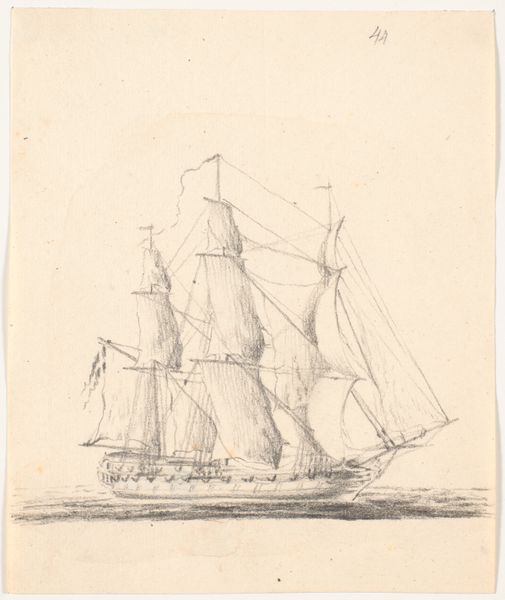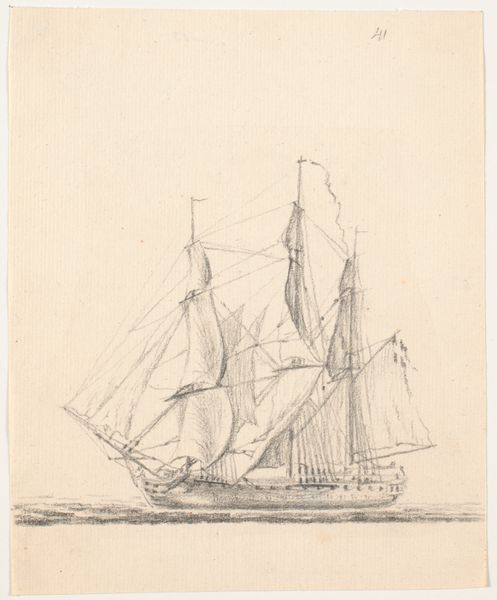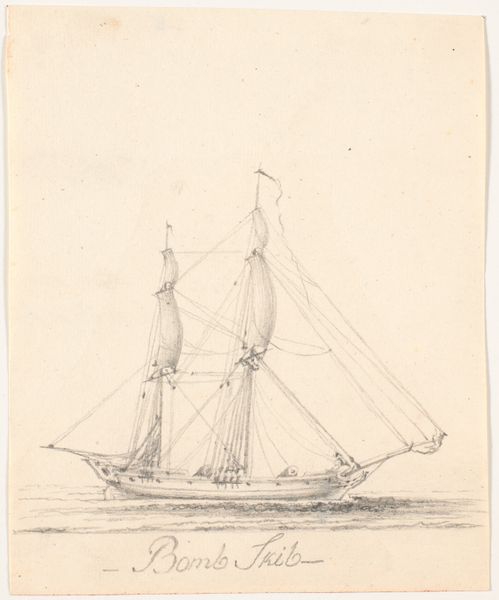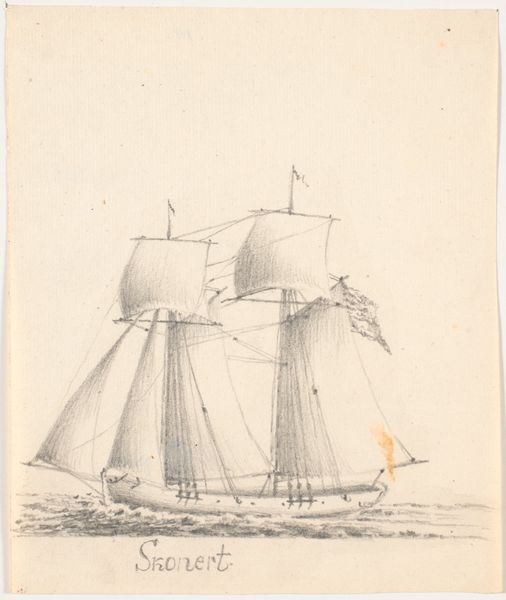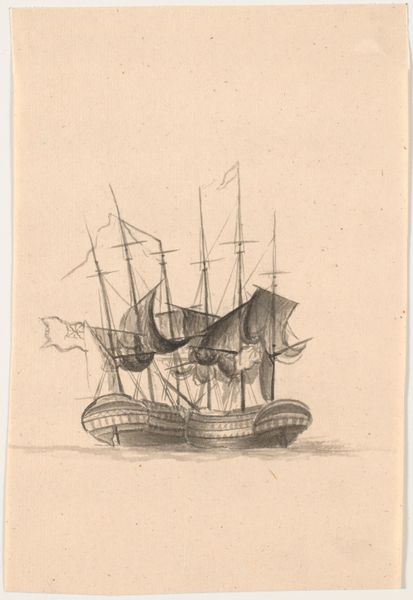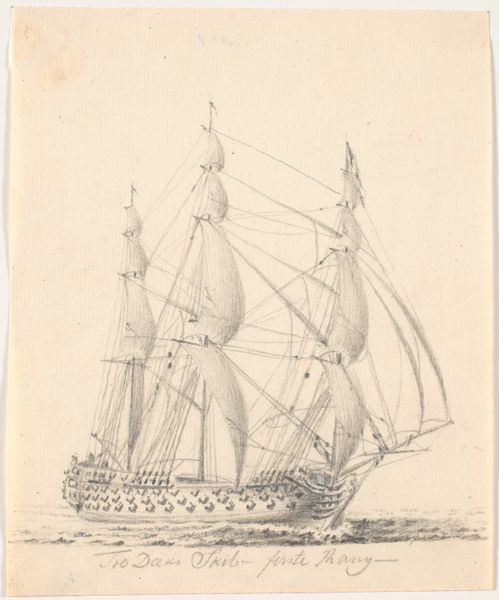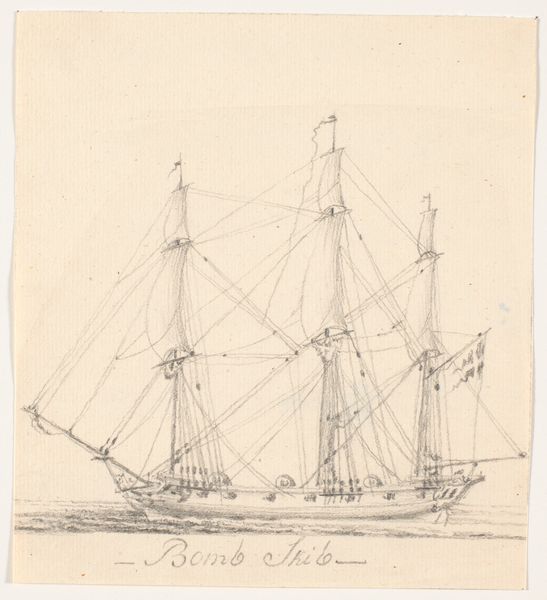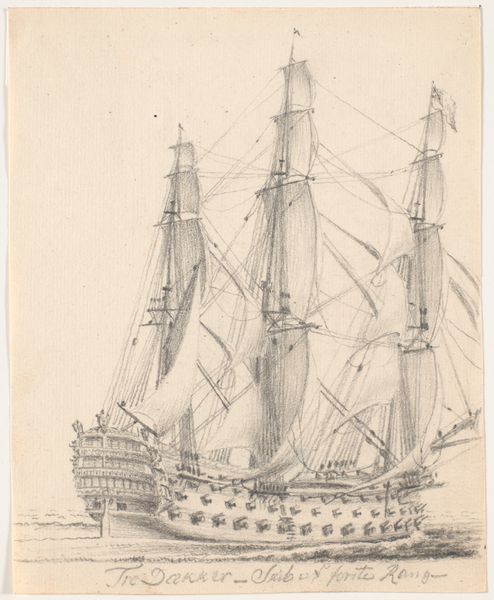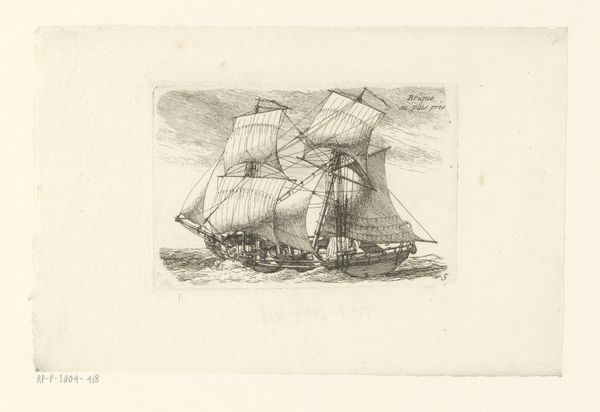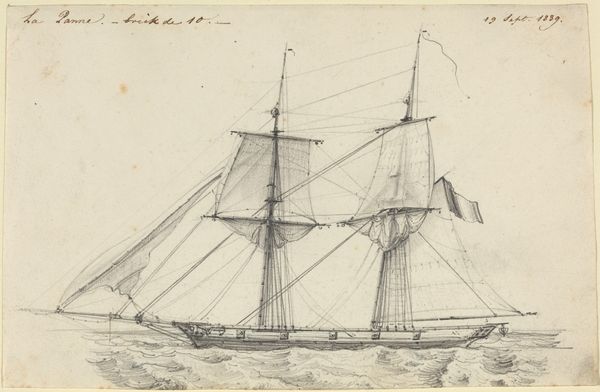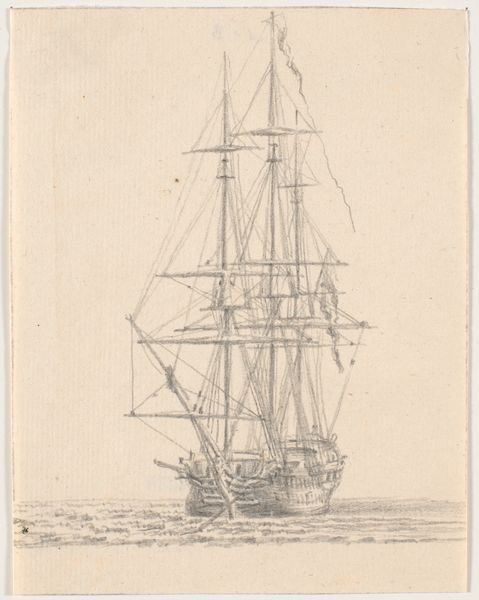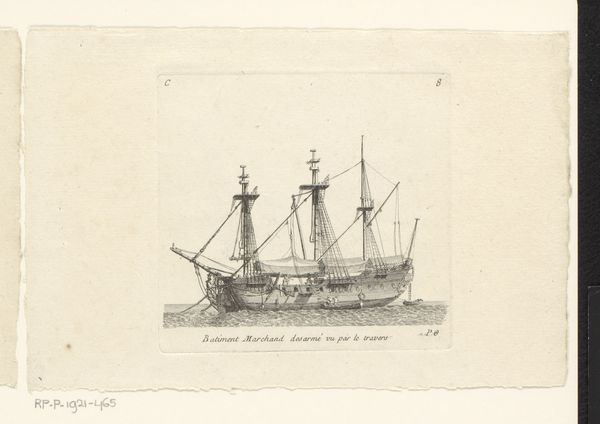
Dimensions: 194 mm (height) x 156 mm (width) (bladmaal)
Curator: This is "Marineskib for fulde sejl," or "Naval Ship in Full Sail," a graphite drawing attributed to C.A. Lorentzen and dated sometime between 1746 and 1828. Editor: There’s something instantly evocative about the subject. I’m struck by the detail rendered with such delicate pencil work – the way it captures the texture of the sails, even the subtle movement of the water feels so engaging. Curator: It’s interesting to consider this drawing within the context of maritime power during Lorentzen’s era. Naval ships represented not only military might but also the expansion of trade routes and colonial ambitions. Editor: Absolutely. And the means by which Lorentzen represented these maritime feats! The reliance on pencil and graphite tells me it may be intended for planning. One might consider this not as fine art per se, but utilitarian object acting in the service of greater imperial schemes. Curator: Precisely. Its sketch-like quality suggests a preparatory study, possibly for a larger painting or engraving, highlighting the stages involved in image production and how sketches contribute to the final, often more propagandistic, form. Editor: That labor itself is also part of this object's history: think of the work involved in creating, maintaining, and equipping such a ship – a material history embodied in every stroke of the artist's pencil. How might access to materials themselves impact production? The whiteness of this page is interesting, perhaps pointing to industrial production! Curator: We should consider too how art institutions have played a role in elevating studies like this, which originally might have served a purely functional purpose, into objects of artistic merit worthy of display and preservation. Editor: I am always compelled by the conditions of the aesthetic judgement: How did *this* survive the sifting criteria to merit its existence on the wall today? Curator: Yes! Ultimately, looking closely at the object's material construction and its institutional context helps us understand not only the art but its social and historical life as well. Editor: And considering both allows for a more rounded appreciation of this drawing and its implications. Thank you for guiding us through.
Comments
No comments
Be the first to comment and join the conversation on the ultimate creative platform.
